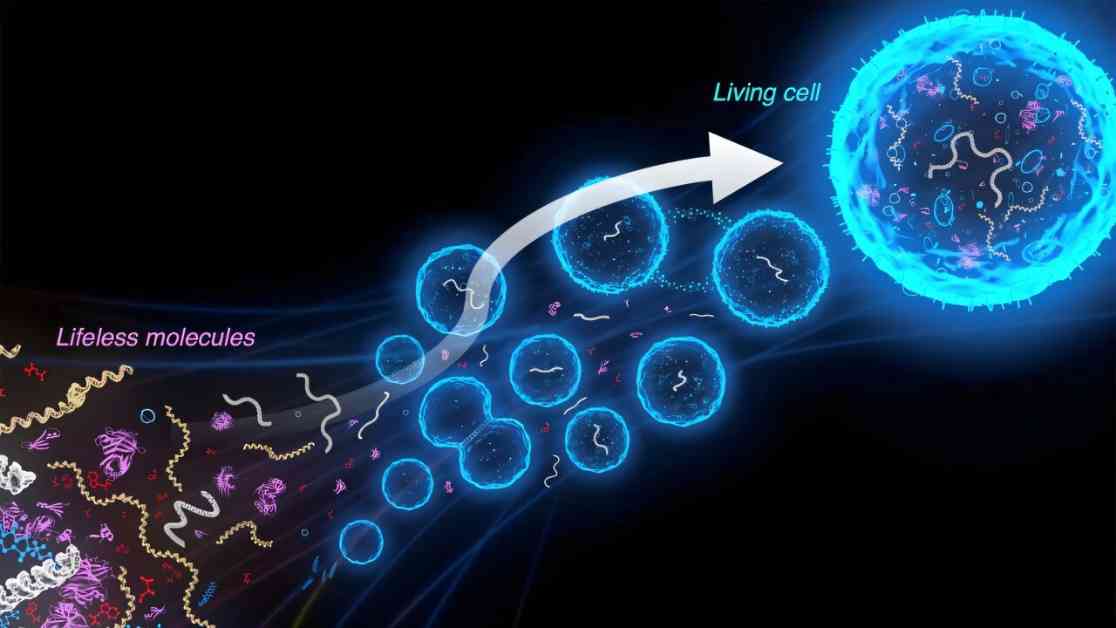Bert Poolman, a Professor of Biochemistry at the University of Groningen, has been dedicated to unraveling the mystery of how lifeless molecules can assemble to form a living cell for more than two decades. His research focuses on constructing simplified artificial versions of biological systems that can serve as building blocks for a synthetic cell.
Poolman’s recent publications in Nature Nanotechnology and Nature Communications detail his work on developing systems for energy conversion and nutrient processing within synthetic cells. The research involves collaborating with six Dutch research institutes under the consortium BaSyc (Building a Synthetic Cell) to create the essential components necessary for a synthetic cell.
The primary goal of Poolman’s research is to replicate the functions of mitochondria, which are the energy-producing organelles in cells. By simplifying the complex processes involved in energy conversion, Poolman’s team managed to reduce the number of required components from hundreds in mitochondria to just five in the synthetic system. This streamlined approach allows for a more targeted design compared to the evolutionary processes that lead to the complexity of natural cellular systems.
The artificial energy conversion system developed by Poolman’s group operates within vesicles, small cell-like structures that can take in molecules like ADP and arginine to generate ATP, the energy currency of cells. By utilizing a cycle of ATP production and consumption, the synthetic system mimics the metabolic processes crucial for cellular functions such as growth, division, and protein synthesis.
In addition to energy conversion, Poolman also engineered a synthetic pumping system within vesicles to create an electrical potential similar to that of electronic circuits. This system enables the accumulation of nutrients inside the vesicles through the movement of charged particles, simulating the transport processes found in living cells with only two components.
Further enhancements to the synthetic system included the addition of enzymes to process transported sugars like lactose into useful molecules such as NADH, a critical coenzyme for cellular functions. These modifications demonstrate the potential for expanding the capabilities of synthetic cells beyond basic energy production to more complex biochemical reactions.
While the current focus is on developing individual modules for energy conversion, nutrient transport, and enzymatic reactions, the long-term goal of Poolman’s research is to integrate these components into a fully functional synthetic cell capable of autonomous growth and division. The ongoing EVOLF project, set to run for another decade, seeks to explore the possibilities of assembling lifeless modules into living cells, providing valuable insights into the fundamental principles of life.
By creating a simplified blueprint for life through synthetic biology, scientists like Bert Poolman are not only advancing our understanding of the origins of life but also paving the way for potential applications in biotechnology and medicine. This groundbreaking research opens new avenues for exploring the boundaries between the living and non-living worlds, offering a glimpse into the mechanisms that underpin the complexity of biological systems.













